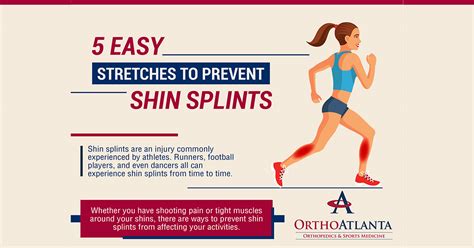How to Prevent Shin Splints: A Runner's Guide to Healthy Legs
Shin splints, that nagging pain along the shinbone, are a common ailment for runners and athletes alike. But they're largely preventable with the right approach. This guide will equip you with the knowledge and strategies to keep your shins happy and healthy, allowing you to enjoy your runs without pain.
Understanding Shin Splints: What Causes Them?
Shin splints, medically known as medial tibial stress syndrome (MTSS), are caused by overuse and repetitive stress on the muscles, tendons, and bone tissue surrounding your tibia (shinbone). This inflammation typically occurs along the inner edge of the shin. Several factors contribute to their development:
- Improper Footwear: Wearing worn-out shoes, shoes lacking proper arch support, or shoes that don't fit correctly can significantly increase your risk.
- Overtraining: Gradually increasing your running distance and intensity is crucial. Sudden increases in mileage or intensity put excessive stress on your shins.
- Incorrect Running Form: Poor running technique, like overstriding or landing too hard on your heels, can exacerbate stress on your shins.
- Muscle Imbalances: Weak muscles in your legs, particularly in your calves and ankles, can lead to improper biomechanics and increased shin stress.
- Hard Surfaces: Running frequently on hard surfaces like concrete puts more stress on your shins compared to softer surfaces like trails.
- Flat Feet or High Arches: Both flat feet and high arches can alter the way your foot strikes the ground, impacting shin stress.
Effective Strategies to Prevent Shin Splints
Preventing shin splints requires a multifaceted approach focusing on proper training, footwear, and overall leg strength. Here are some key strategies:
1. Invest in Proper Footwear
High-quality running shoes with adequate cushioning and arch support are paramount. Consult a specialist at a running store to find shoes suited to your foot type and running style. Replace your shoes regularly – every 300-500 miles is a good guideline.
2. Gradual Training Progression
Avoid sudden increases in mileage or intensity. Gradually increase your running distance and intensity by no more than 10% per week. This allows your body to adapt and reduces the risk of overuse injuries.
3. Improve Your Running Form
Focus on a midfoot strike, landing beneath your hips rather than on your heels. A running coach or experienced runner can provide valuable feedback on your form. Consider videos and resources to analyze your running gait.
4. Strengthen Your Legs
Strengthening exercises target key muscle groups that support your shins. Incorporate exercises like calf raises, ankle rotations, and leg strengthening exercises into your routine. Stronger legs mean better support and reduced stress on your shins.
5. Choose Appropriate Running Surfaces
Opt for softer surfaces like trails or running tracks whenever possible. Reduce the amount of time you spend running on hard surfaces such as concrete.
6. Stretching and Flexibility
Regular stretching is vital. Include stretches for your calves, hamstrings, and hip flexors. This improves flexibility and reduces muscle tightness, which can contribute to shin splints.
7. Listen to Your Body
Rest and recovery are crucial. Pay attention to any pain or discomfort in your shins. Don't push through pain; take rest days when needed.
8. Consider Orthotics
If you have flat feet or high arches, custom orthotics can provide better support and alignment, reducing stress on your shins. Consult a podiatrist to determine if orthotics are right for you.
When to See a Doctor
If you experience persistent pain, swelling, or significant discomfort in your shins, it’s crucial to consult a doctor or physical therapist. They can accurately diagnose the issue and recommend appropriate treatment options. Ignoring shin splints can lead to more serious problems.
By following these preventative measures, you can significantly reduce your risk of shin splints and maintain a consistent and enjoyable running routine. Remember that consistency and a proactive approach to your training are key to long-term running health.
